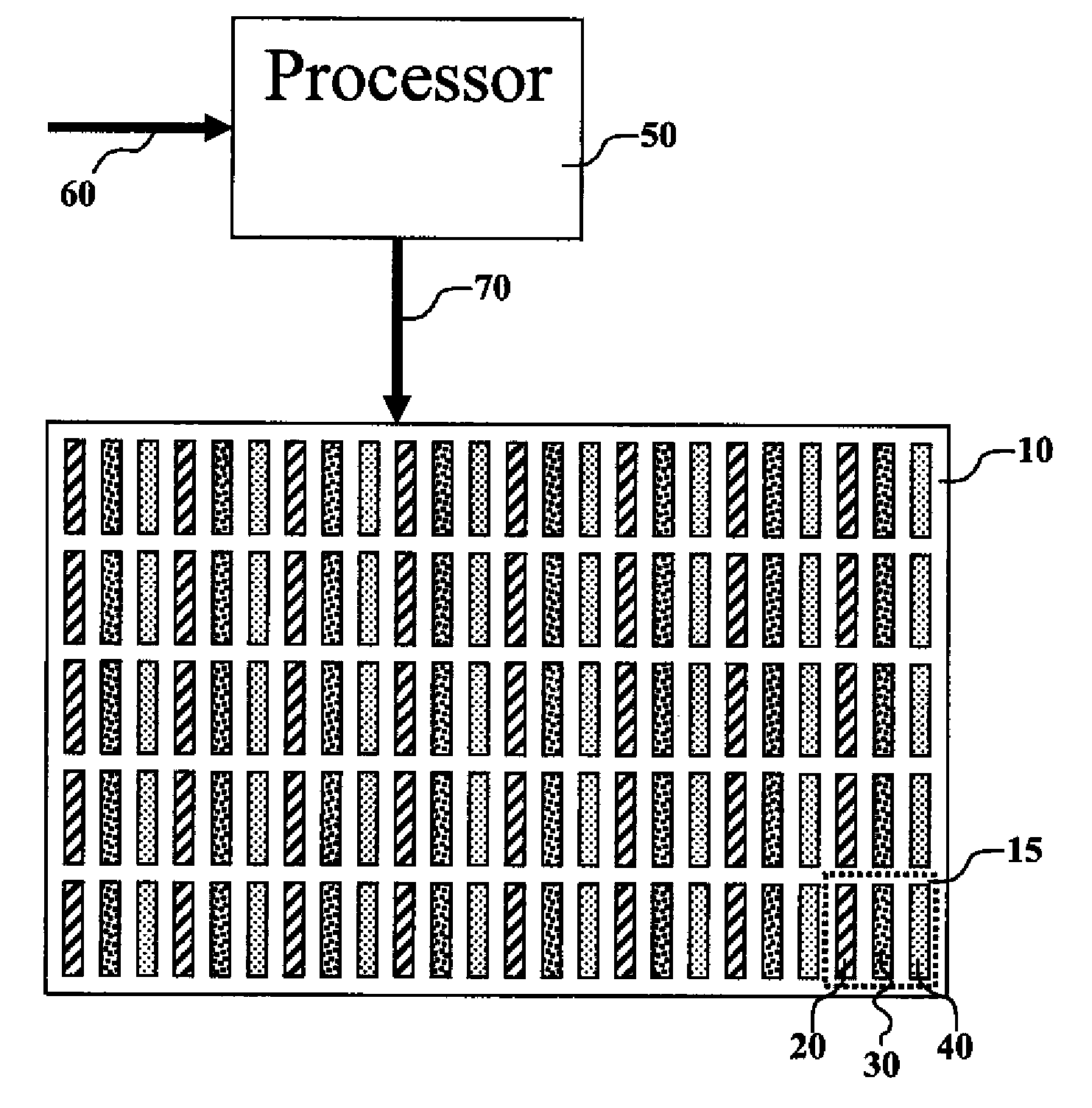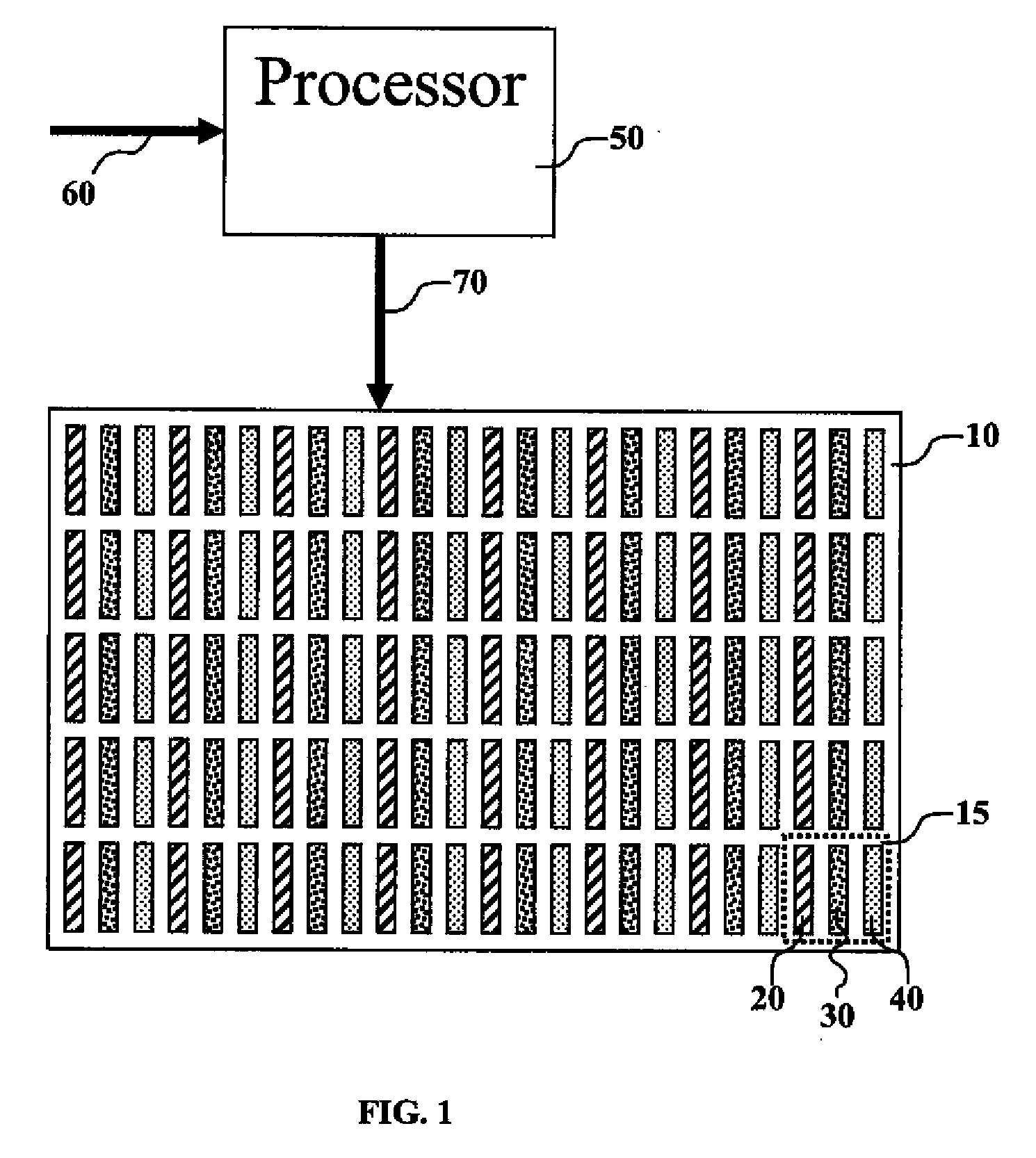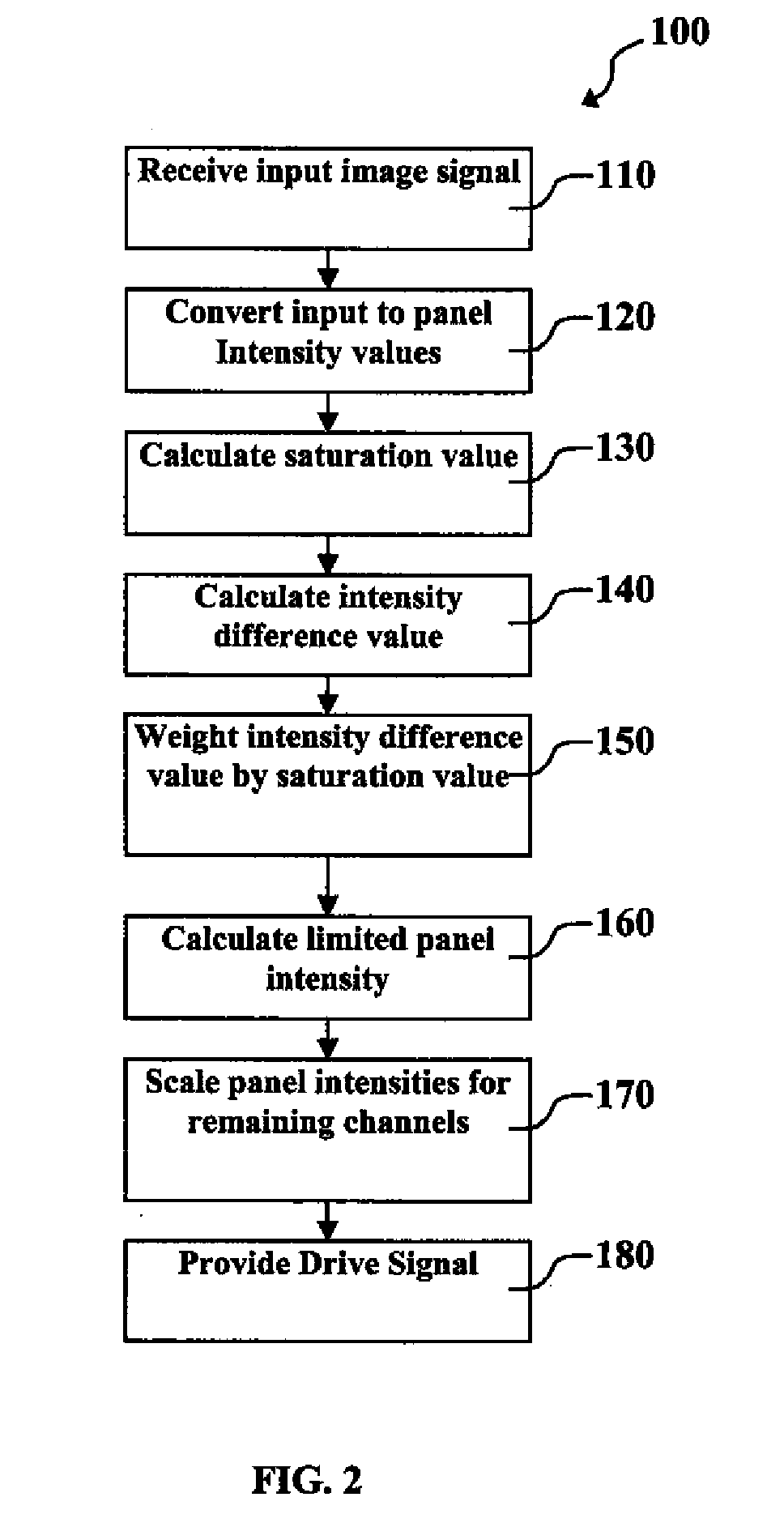Method for improving display lifetime
- Summary
- Abstract
- Description
- Claims
- Application Information
AI Technical Summary
Benefits of technology
Problems solved by technology
Method used
Image
Examples
Embodiment Construction
[0015]Turning now to FIG. 1, there is shown one embodiment of a display that can be used in the practice of this invention. The display can include an electroluminescent (EL) display 10, such as an OLED display, and a controller 50 for providing the method of the present invention. Controller 50 can be any one or combination of digital or analog processors capable of receiving an input image signal 60, processing the input image signal, and providing a drive signal 70 to drive EL display 10. EL display 10 includes an array of colored pixels 15, wherein each pixel includes at least a first subpixel 20, a second subpixel 30, and a third subpixel 40, each of which emits light of a different color, e.g. blue, green, and red subpixels.
[0016]It is often seen that one of the colored subpixels, e.g. first subpixel 20, has a lower or shorter lifetime than the lifetimes of the other colored subpixels when all the subpixels are driven to equivalent luminance values, e.g. the luminance values r...
PUM
 Login to View More
Login to View More Abstract
Description
Claims
Application Information
 Login to View More
Login to View More - R&D Engineer
- R&D Manager
- IP Professional
- Industry Leading Data Capabilities
- Powerful AI technology
- Patent DNA Extraction
Browse by: Latest US Patents, China's latest patents, Technical Efficacy Thesaurus, Application Domain, Technology Topic, Popular Technical Reports.
© 2024 PatSnap. All rights reserved.Legal|Privacy policy|Modern Slavery Act Transparency Statement|Sitemap|About US| Contact US: help@patsnap.com










